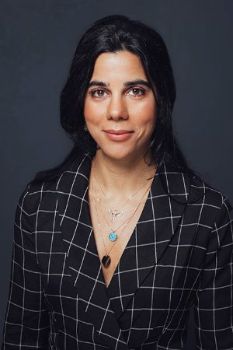25 million NOK for Gözen group and collaborators to help answer basic scientific questions about autophagy
NCMM group leader, Dr. Irep Gözen, and collaborators have been awarded the large, interdisciplinary research project grant from the Research Council of Norway and the University of Oslo

Note: This article originally appeared on the Centre for Molecular Medicine Norway (NCMM) website: https://www.med.uio.no/ncmm/english/news-and-events/news/2022/25-million-nok-for-gozen-group-and-collaborators.html
The project is coordinated by NCMM group leader, Irep Gözen, Head of the Bionanotechnology and System Membranes Group, with collaborators Harald Stenmark, Group Leader at the Centre for Cancer Cell Reprogramming, Oslo University Hospital, and Andreas Carlsson, Associate Professor in Mathematics, University of Oslo.
Interdisciplinary effort will aim to collaboratively tackle basic biological questions
Autophagy or ‘self-eating’ is biology’s way of clearing away damaged cells to allow the regeneration of new and healthy ones. The process is fundamental for the function of healthy cells.
Although previous research has helped to build a clearer picture of how autophagy works, some basic biological questions still remain to be answered. To tackle some of these questions, an interdisciplinary project involving researchers from the University of Oslo and Oslo University Hospital will bring together researchers in cell biology, biomaterials science and nanotechnology, as well as mathematical modelling.
The project, ‘Biophysics of double bilayer membrane compartments’ has been funded by a grant that comes as part of the Research Council’s call for large, pioneering interdisciplinary research projects, ‘Fellesløftet IV’. 920 million NOK was made available to fund the successful projects.
Autophagy and understanding its pathways has huge potential for improving patient care
A key focus of the project will be to identify how cellular double lipid bilayer vesicles are formed and developed in response to interfacial contacts during autophagy. A deeper understanding of autophagy and the mechanisms involved in the process will help researchers to further understand the role it plays in diseases such as cancer, inflammatory disease, infection, and neurodegenerative disease. The possibility to disrupt the autophagy pathway has huge potential for revolutionizing the way such diseases are treated.
Biophysical factors of autophagy have not yet been fully explored
Whilst there has been much work to identify and characterise the process of autophagy, research has, until now, neglected the role that biophysical factors play in the process.
The project from the group will aim to find some of the missing pieces in the puzzle, such as to determine the biophysical underpinnings in the autophagic process, and will add a new understanding of double bilayer enclosed structures in biology such as viral replication compartments, nuclear envelopes, chloroplasts and mitochondria. The Gözen group is constructing and assembling artificial cells which mimic real biological cells. They use them to study shape transformations of lipid membranes which occur in biological cells.
Commenting on the grant, Dr. Irep Gözen said:
— First of all, an inter-disciplinary effort enables that this research problem is approached from different angles. This is very useful for complex problems such as the one we focus in this project. The project will help us continue our group’s tradition to collaborate with researchers from other disciplines and will strengthen my experience as a project manager.
— I am looking forward to meetings with our collaborators in which prolific discussions take place and original ideas come out. It is fun! I am also very excited about new team members who will join our team to work in this project.
Read more about the project on the Research Council of Norway's website.